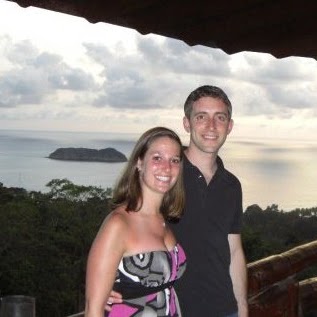Keith D Friedman
age ~74
from Vashon, WA
- Also known as:
-
- Keith David Friedman
- Kenneth D Friedman
- Keith Freidman
- Friedman Keith
Keith Friedman Phones & Addresses
- Vashon, WA
- 1301 W 5Th St APT 627, Austin, TX 78703
- Bee Cave, TX
- Pittsburgh, PA
- Santa Barbara, CA
- Ventura, CA
- 11802 Colleyville Dr, Bee Cave, TX 78738 • 5122633888
Work
-
Position:Professional/Technical
Education
-
Degree:Associate degree or higher
Medicine Doctors

Keith Friedman
view sourceSpecialties:
Cardiovascular Disease
Work:
Cardiovascular Specialists Of Central Maryland
10710 Charter Dr STE 400, Columbia, MD 21044
4109977979 (phone), 4109979231 (fax)
10710 Charter Dr STE 400, Columbia, MD 21044
4109977979 (phone), 4109979231 (fax)
Education:
Medical School
University of Maryland School of Medicine
Graduated: 1997
University of Maryland School of Medicine
Graduated: 1997
Procedures:
Cardioversion
Cardiac Stress Test
Continuous EKG
Echocardiogram
Electrocardiogram (EKG or ECG)
Pacemaker and Defibrillator Procedures
Cardiac Stress Test
Continuous EKG
Echocardiogram
Electrocardiogram (EKG or ECG)
Pacemaker and Defibrillator Procedures
Conditions:
Aortic Valvular Disease
Atrial Fibrillation and Atrial Flutter
Congenital Anomalies of the Heart
Paroxysmal Supreventricular Tachycardia (PSVT)
Valvular Heart Disease
Atrial Fibrillation and Atrial Flutter
Congenital Anomalies of the Heart
Paroxysmal Supreventricular Tachycardia (PSVT)
Valvular Heart Disease
Languages:
English
Description:
Dr. Friedman graduated from the University of Maryland School of Medicine in 1997. He works in Columbia, MD and specializes in Cardiovascular Disease. Dr. Friedman is affiliated with Doctors Community Hospital, Howard County General Hospital and Johns Hopkins Bayview Medical Center.
Name / Title
Company / Classification
Phones & Addresses
Owner
Friedman Research
Laboratories-Research & Develo
Laboratories-Research & Develo
111 S Ln Patera Ln, Goleta, CA 93117
8056831300, 8059671079
8056831300, 8059671079
President
SAFETY RESEARCH INSTITUTE
820 State St, Santa Barbara, CA 93101
Director, President, Director , Owner
Friedman Research Corporation
Research · Marketing Research & Public Open Polling
Research · Marketing Research & Public Open Polling
1508-B Ferguson Ln, Austin, TX 78754
1508 Ferguson Ln STE B, Austin, TX 78754
15088 Ferguson Ln, Austin, TX 78754
5122472277
1508 Ferguson Ln STE B, Austin, TX 78754
15088 Ferguson Ln, Austin, TX 78754
5122472277
President
COMPOSITE PERIMETER CORPORATION
111 Ln Patera Ln, Goleta, CA 93117
Resumes

Director- Municipal Capital Markets- M&T Bank
view sourcePosition:
Director- Municipal Trader at M&T Bank
Location:
Baltimore, Maryland
Industry:
Financial Services
Work:
M&T Bank - Baltimore, Maryland Area since Jan 2012
Director- Municipal Trader
RBC Capital Markets Jan 2010 - Dec 2011
Municipal Trader
Lehman Brothers Jan 2006 - Jan 2010
Municipal Trader
Director- Municipal Trader
RBC Capital Markets Jan 2010 - Dec 2011
Municipal Trader
Lehman Brothers Jan 2006 - Jan 2010
Municipal Trader
Education:
University of Rhode Island 2001 - 2005
high school 1998 - 2001
high school 1998 - 2001

President At Genset Services Inc
view sourcePosition:
President & CEO at Genset Services Inc
Location:
Pompano Beach, Florida
Industry:
Machinery
Work:
Genset Services Inc - Pompano Beach, Florida since Jan 2003
President & CEO
Tampa Armature Works Jan 1991 - Dec 2002
General Service Manger
President & CEO
Tampa Armature Works Jan 1991 - Dec 2002
General Service Manger
Education:
Coral Springs High School

Researcher At University Of Texas At Austin
view sourcePosition:
Researcher at University of Texas at Austin
Location:
Austin, Texas Area
Industry:
Higher Education
Work:
University of Texas at Austin
Researcher
Researcher

President At Fbo Strategies
view sourcePosition:
President at FBO Strategies
Location:
United States
Industry:
Insurance
Work:
FBO Strategies
President
President

Keith Friedman
view sourceLocation:
United States
License Records
Keith Friedman
License #:
MT041059T - Expired
Category:
Medicine
Type:
Graduate Medical Trainee
Us Patents
-
Analyte Monitoring Device And Methods Of Use
view source -
US Patent:6565509, May 20, 2003
-
Filed:Sep 21, 2000
-
Appl. No.:09/667199
-
Inventors:James Say - Alameda CA
Michael F. Tomasco - Cupertino CA
Adam Heller - Austin TX
Yoram Gal - Kibbutz Yagur, IL
Behrad Aria - Alameda CA
Ephraim Heller - Oakland CA
Phillip John Plante - Sunnyvale CA
Mark S. Vreeke - Alameda CA
Keith A. Friedman - Austin TX
Fredric C. Colman - Berkeley CA -
Assignee:TheraSense, Inc. - Alameda CA
-
International Classification:A61B 500
-
US Classification:600365, 600347, 600345
-
Abstract:An analyte monitor includes a sensor, a sensor control unit, and a display unit. The sensor has, for example, a substrate, a recessed channel formed in the substrate, and conductive material disposed in the recessed channel to form a working electrode. The sensor control unit typically has a housing adapted for placement on skin and is adapted to receive a portion of an electrochemical sensor. The sensor control unit also includes two or more conductive contacts disposed on the housing and configured for coupling to two or more contact pads on the sensor. A transmitter is disposed in the housing and coupled to the plurality of conductive contacts for transmitting data obtained using the sensor. The display unit has a receiver for receiving data transmitted by the transmitter of the sensor control unit and a display coupled to the receiver for displaying an indication of a level of an analyte. The analyte monitor may also be part of a drug delivery system to alter the level of the analyte based on the data obtained using the sensor.
-
Electrodes With Multilayer Membranes And Methods Of Making The Electrodes
view source -
US Patent:6746582, Jun 8, 2004
-
Filed:May 11, 2001
-
Appl. No.:09/854310
-
Inventors:Adam Heller - Austin TX
Ting Chen - Austin TX
Keith A. Friedman - Austin TX -
Assignee:TheraSense, Inc. - Alameda CA
-
International Classification:G01N 27327
-
US Classification:20440306, 20440305, 422 57, 427 213
-
Abstract:A sensor including a sensing layer is disposed over an electrode or an optode and a layer-by-layer assembled mass transport limiting membrane disposed over the sensing layer. The membrane includes at least one layer of a polyanionic or polycationic material. The assembled layers of the membrane are typically disposed in an alternating manner. The sensor also optionally includes a biocompatible membrane.
-
Analyte Monitoring Device And Methods Of Use
view source -
US Patent:6990366, Jan 24, 2006
-
Filed:Nov 24, 2003
-
Appl. No.:10/722264
-
Inventors:James Say - Alameda CA, US
Michael F. Tomasco - Cupertino CA, US
Adam Heller - Austin TX, US
Yoram Gal - Kibbutz Yagur, IL
Behrad Aria - Alameda CA, US
Ephraim Heller - Oakland CA, US
Phillip John Plante - Sunnyvale CA, US
Mark S. Vreeke - Alameda CA, US
Keith A. Friedman - Austin TX, US
Fredric C. Colman - Berkeley CA, US -
Assignee:TheraSense, Inc. - Alameda CA
-
International Classification:A61B 5/05
-
US Classification:600345, 600347, 600360, 600357
-
Abstract:An analyte monitor includes a sensor, a sensor control unit, and a display unit. The sensor has, for example, a substrate, a recessed channel formed in the substrate, and conductive material disposed in the recessed channel to form a working electrode. The sensor control unit typically has a housing adapted for placement on skin and is adapted to receive a portion of an electrochemical sensor. The sensor control unit also includes two or more conductive contacts disposed on the housing and configured for coupling to two or more contact pads on the sensor. A transmitter is disposed in the housing and coupled to the plurality of conductive contacts for transmitting data obtained using the sensor. The display unit has a receiver for receiving data transmitted by the transmitter of the sensor control unit and a display coupled to the receiver for displaying an indication of a level of an analyte. The analyte monitor may also be part of a drug delivery system to alter the level of the analyte based on the data obtained using the sensor.
-
Analyte Monitoring Devices And Methods Of Use
view source -
US Patent:7003341, Feb 21, 2006
-
Filed:Nov 24, 2003
-
Appl. No.:10/722251
-
Inventors:James Say - Alameda CA, US
Michael F. Tomasco - Cupertino CA, US
Adam Heller - Austin TX, US
Yoram Gal - Kibbutz Yagur, IL
Behrad Aria - Alameda CA, US
Ephraim Heller - Oakland CA, US
Phillip John Plante - Sunnyvale CA, US
Mark S. Vreeke - Alameda CA, US
Keith A. Friedman - Austin TX, US
Fredric C. Colman - Berkeley CA, US -
Assignee:Abbott Diabetes Care, Inc. - Alameda CA
-
International Classification:A61B 5/05
-
US Classification:600345
-
Abstract:An analyte monitor includes a sensor, a sensor control unit, and a display unit. The sensor has, for example, a substrate, a recessed channel formed in the substrate, and conductive material disposed in the recessed channel to form a working electrode. The sensor control unit typically has a housing adapted for placement on skin and is adapted to receive a portion of an electrochemical sensor. The sensor control unit also includes two or more conductive contacts disposed on the housing and configured for coupling to two or more contact pads on the sensor. A transmitter is disposed in the housing and coupled to the plurality of conductive contacts for transmitting data obtained using the sensor. The display unit has a receiver for receiving data transmitted by the transmitter of the sensor control unit and a display coupled to the receiver for displaying an indication of a level of an analyte. The analyte monitor may also be part of a drug delivery system to alter the level of the analyte based on the data obtained using the sensor.
-
Analyte Monitoring Device And Methods Of Use
view source -
US Patent:7190988, Mar 13, 2007
-
Filed:Nov 24, 2003
-
Appl. No.:10/722253
-
Inventors:James Say - Alameda CA, US
Michael F. Tomasco - Cupertino CA, US
Adam Heller - Austin TX, US
Yoram Gal - Kibbutz Yagur, IL
Behrad Aria - Alameda CA, US
Ephraim Heller - Oakland CA, US
Phillip John Plante - Sunnyvale CA, US
Mark S. Vreeke - Alameda CA, US
Keith A. Friedman - Austin TX, US
Fredric C. Colman - Berkeley CA, US -
Assignee:Abbott Diabetes Care, Inc. - Alameda CA
-
International Classification:A61B 5/05
A61B 5/00
G01N 27/26 -
US Classification:600345, 600347, 600365, 204401
-
Abstract:An analyte monitor includes a sensor, a sensor control unit, and a display unit. The sensor has, for example, a substrate, a recessed channel formed in the substrate, and conductive material disposed in the recessed channel to form a working electrode. The sensor control unit typically has a housing adapted for placement on skin and is adapted to receive a portion of an electrochemical sensor. The sensor control unit also includes two or more conductive contacts disposed on the housing and configured for coupling to two or more contact pads on the sensor. A transmitter is disposed in the housing and coupled to the plurality of conductive contacts for transmitting data obtained using the sensor. The display unit has a receiver for receiving data transmitted by the transmitter of the sensor control unit and a display coupled to the receiver for displaying an indication of a level of an analyte. The analyte monitor may also be part of a drug delivery system to alter the level of the analyte based on the data obtained using the sensor.
-
Rollover Safety Seat
view source -
US Patent:7216931, May 15, 2007
-
Filed:Jun 28, 2004
-
Appl. No.:10/877176
-
Inventors:Keith Friedman - Santa Barbara CA, US
-
Assignee:Friedman Research Corporation - Santa Barbara CA
-
International Classification:B60N 2/42
B60R 21/00 -
US Classification:2972161, 29721613
-
Abstract:This invention is vehicle seat, which provides enhanced occupant protection in the event of a vehicle rollover. The seat includes a rollover sensor and mechanisms compatible with manual reclining seats. These mechanisms allow for rapid reclining of the seat during a rollover, by unlocking the reclining mechanism and automatically reclining the seat.
-
Vehicle Seat With Rollover Safety Features
view source -
US Patent:7278682, Oct 9, 2007
-
Filed:Mar 24, 2004
-
Appl. No.:10/807325
-
Inventors:Keith Friedman - Santa Barbara CA, US
Dennis Mihora - Santa Barbara CA, US -
Assignee:Friedman Research Corporation - Santa Barbara CA
-
International Classification:B60N 2/42
-
US Classification:2972161, 29721618
-
Abstract:This invention is vehicle seat, which provides enhanced occupant protection in the event of a vehicle rollover. The seat includes a rollover sensor and mechanisms compatible with power-adjustable seat design, that cause rapid distancing of the occupant from the vehicle roof in the event of a rollover. The mechanisms include high-speed motors operating reclining, lateral position, and seat lowering mechanisms, as well as pyro actuators for these mechanisms.
-
Vehicle Safety Control System
view source -
US Patent:7644799, Jan 12, 2010
-
Filed:Feb 10, 2005
-
Appl. No.:11/056539
-
Inventors:Keith Friedman - Santa Barbara CA, US
Fred Kahl - Goleta CA, US
Dennis Mihora - Santa Barbara CA, US -
Assignee:Friedman Research Corporation - Austin TX
-
International Classification:B60R 21/00
-
US Classification:180282, 180274
-
Abstract:The invention is a safety control system for vehicle safety mechanisms. The novel control system uses acquired and stored data about the configuration of a vehicle passenger compartment at the time of an emergency event to determine the type, sequence and degree of safety device deployment. In one embodiment, the invention contains a novel power system employing a supplemental power supply specifically included to provide extra power beyond what is typically available from the power distribution system in conventional passenger compartment vehicle power systems. The novel power supply is routed to the appropriate safety mechanisms when the vehicle emergency event sensors, ie rollover, impact etc. detect a condition when the safety mechanism should be deployed and the extra power supply is required.
News

Limo alterations can create weaknesses
view source- "What you look at is what kind of ignition sources are present in the area where it appears the fire started," said Keith Friedman, an investigator and car safety expert in Santa Barbara. "It sounds like this one happened pretty quickly, and that gives you an idea about fuels."
- Date: May 07, 2013
- Category: U.S.
- Source: Google

Keith Friedman
view source
Keith Friedman
view source
Keith Friedman
view source
Keith Friedman
view source
Keith Friedman
view source
Keith Friedman
view source
Keith Friedman
view source
Keith Friedman
view sourceYoutube
Plaxo

Keith Friedman
view sourceChicagoPast: Director of Research at Iron Partners, Analyst at Iron Financial Management

Keith Friedman
view sourceNew York, NYPrincipal at FBO Strategies
Classmates

Keith Friedman
view sourceSchools:
First Colony Junior High School Sugar Land TX 1995-1999
Community:
Kavan Yen, Jennifer Truluck, Brad Forman

Keith Friedman
view sourceSchools:
Cheltenham Elementary School Cheltenham PA 1962-1968
Community:
Ilene Geiger, Carl Polichetti

Keith Anton Friedman
view sourceSchools:
Coral Springs High School Coral Springs FL 1996-2000
Community:
Denise Johnson

Keith Friedman
view sourceSchools:
Monmouth County Academy of Allied Health & Science Neptune NJ 1997-2001
Community:
Rebecca Krauss, Griff Jones, Steven Filippo, Eric Lopez, Butter Pecan, Brian Quinn, Janine Ciccosanti, Phil Maida, Marielle Terzulli, Alina Bishop, Gerald Kosztur

Keith Friedman | Cheltenh...
view source
Keith Friedman | Seneca V...
view source
Monmouth County Academy o...
view sourceGraduates:
Keith Friedman (1997-2001),
Stephanie Straus (1998-2002),
Rebecca Krauss (1997-2001),
Nicolette Setola (2002-2006),
Terance Auleta (1998-2002)
Stephanie Straus (1998-2002),
Rebecca Krauss (1997-2001),
Nicolette Setola (2002-2006),
Terance Auleta (1998-2002)

First Colony Junior High ...
view sourceGraduates:
Warren Redfearn (1988-1991),
Alexandra Homes (2000-2003),
Keith Friedman (1995-1999),
Nicole Burbridge (1995-1999)
Alexandra Homes (2000-2003),
Keith Friedman (1995-1999),
Nicole Burbridge (1995-1999)
Myspace
Flickr
Googleplus

Keith Friedman

Keith Friedman

Keith Friedman

Keith Friedman

Keith Friedman
Get Report for Keith D Friedman from Vashon, WA, age ~74













